DIY electrical wiring in the house step by step
Electricity is a serious and responsible business. If you are going to do all the work yourself, you need to do everything very carefully and diligently. Correct wiring in a private house is a guarantee of safety, because according to statistics, 70% of fires happen due to electrical faults. If you are not confident in your abilities, it is better to entrust the work to specialists, only verified.
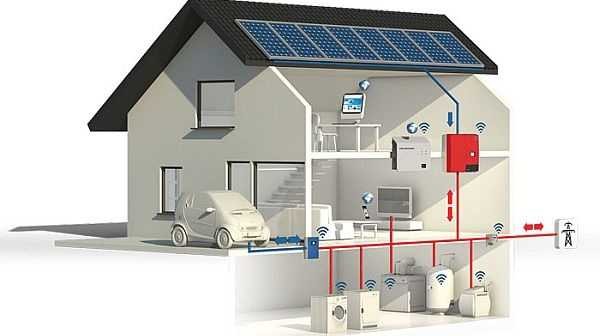
Wiring in a private house can be done by hand
The content of the article
Action plan
The wiring in a private house is done before the start of finishing work. The box of the house has been kicked out, the walls and roof are ready - it's time to start work. The sequence of actions is as follows:
- Determining the type of input - single-phase (220 V) or three-phase (380 V).
- Development of the scheme, calculation of the capacity of the planned equipment, submission of documents and receipt of the project. Here it must be said that it is far from always in the technical conditions that the power declared by you will be determined, most likely no more than 5 kW will be allocated.
- Selection of components and components, purchase of a meter, machines, cables, etc.
- Entering an electrician from a pole into a house... It is carried out by a specialized organization, you need to decide on the type - air or underground, install an input machine and a counter in the right place.
- Install shield, bring electricity to the house.
- Laying cables inside the house, connecting sockets, switches.
- Ground loop device and its connection.
- Testing the system and obtaining an act.
- Connection of electricity and its operation.
This is only a general plan, in each case there are nuances and peculiarities, but you need to start with obtaining the technical conditions for connecting to the power grid and the project. To do this, you need to decide on the type of input and the planned power consumption. It must be remembered that the preparation of documents can take six months, so it is better to submit them even before the start of construction: two years are given to fulfill the technical conditions. During this time, for sure, you will be able to drive out the wall on which you can put the machine gun and the counter.
How many phases
A single-phase voltage (220 V) or three-phase (380 V) can be supplied to a private house. According to the energy consumption standards for a private house for a single-phase network, the maximum consumption for a house can be 10-15 kW, for a three-phase one - 15 kW.
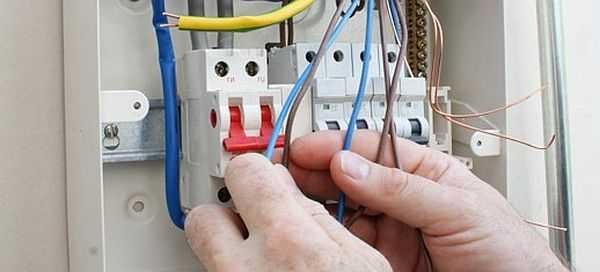
A three-phase input is needed only when you need to connect powerful equipment operating from a 380 V network
So what's the difference? The fact is that powerful electrical appliances can be directly connected to a three-phase network - electric stoves or heating boilers, ovens and the like. However, the requirements for the input and wiring of the 380 V network are much stricter: the voltage is higher, the more likely to get serious injury. Therefore, if your house is no more than 100 square meters, and you do not think to heat it with electricity, you better conduct 220 V.
Planning and getting a project
Having decided on the type of input, you can start developing a plan for the electrification of the house. You take the plan of the house on a scale, and draw where the equipment will be located, figure out where to place the sockets and switches. In this case, it is necessary to take into account where which large-sized furniture will stand, and where it can be rearranged, so as not to point outlets and switches in these zones.
On the plan, you will need to apply all the lighting devices: chandeliers, sconces, floor lamps, lamps. Some will need switches, some will need sockets.Then you will need to figure out which devices in each room will need to be turned on. For example, the kitchen has a lot of equipment that works constantly. It definitely needs sockets. There is also a technique that turns on periodically. All this is applied to the plan, the optimal location of the inclusion points is determined. The same approach is in each of the rooms.
Determination of total power
Having decided approximately what kind of equipment will be in your house, summarize its power. Average power can be taken from the table: there is probably no equipment yet. Moreover, where available, take into account the starting loads (they are much higher). To the found amount, add about 20% of the stock.The result will be the required power.You specify it in papers submitted for obtaining permission to connect electricity to the site. If you are given the declared power, you are very lucky, but you should not hope for it. Most likely, you will have to invest in a standard 5 kW - the most common electricity limit for a private house.

Average power values of devices for calculating the total load on the wiring of a private house with your own hands
Breakdown of consumers into groups
All these consumers (this is the term of professionals) - lamps, spotlights, switches, sockets - are divided into groups. An electrician is bred by a separate branch for lighting fixtures. Usually one is enough, but this is not a rule, it may be more convenient or more expedient to make two branches - for each wing of the house or for each floor - depending on the type and configuration of the building. The illumination of the basement floor, utility rooms, as well as the light on the street stand out in a separate group.
Then they are divided into groups of sockets. How much you can "plant" on one wire - depends on the diameter of the wire used, but not very much - three to five, no more. It is better to allocate a separate power line for connecting each powerful device: this is more reliable from the point of view of fire safety, and will contribute to a longer operation of the devices.
As a result, three to seven lines can go into the kitchen - here the equipment is the most powerful, too: for an electric boiler, separate lines are needed unconditionally. Refrigerator, microwave oven, electric oven, washing machine are also better "put" separately. Less powerful blender, food processor, etc. can be included in one line.
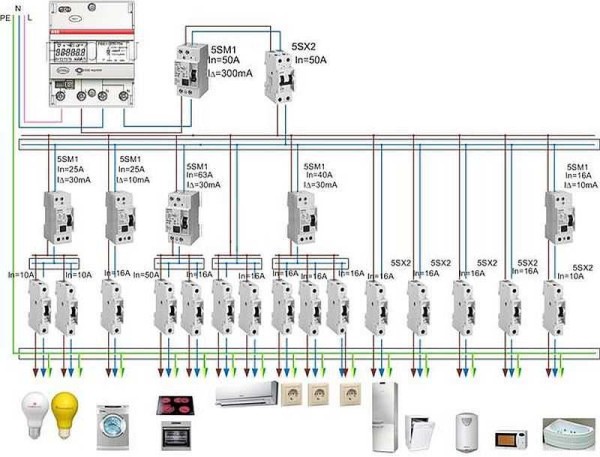
Design of electrical wiring in a private house: we count the number of groups and plan what to connect where
The rooms usually go along two or four lines: in a modern home and in any room there is something to be connected to the power grid. One line will go to lighting. The second will have sockets to which you will need to turn on your computer, router, TV, phone charger. They are all not very powerful and can be combined into one group. If you plan to install an air conditioner or turn on an electric heater, you need separate lines.
If a private house is small - a dacha, for example, then there can be two or three groups in general: it is for all lighting fixtures, the second is for the street and the third is for all internal sockets. In general, the number of groups is an individual matter and depends most of all on the size of the house and the amount of electrical equipment in it.
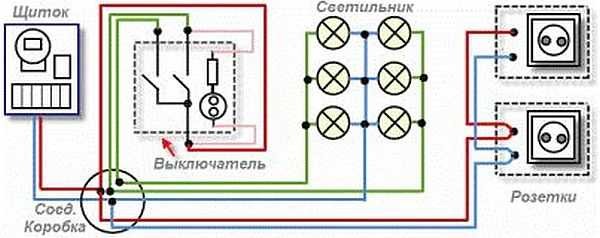
The wiring plan can be quite small if the house is small
By the number of groups received, the number of machines on the switchboard in the house is determined: to the received number of groups you add two or four for development (suddenly you forgot something important, or you will need to turn on something powerful, divide the group too large or far-apart group into two, etc.). The number of groups is selected distribution box and the number of machines in it: there is a separate machine for each group.If a private house is large - on several floors, it makes sense to put more powerful machines on each floor, and connect group machines to them.
Where to put the shield
The place of installation of the electrical panel is not standardized by the standards. There are only restrictions on the distance from the pipelines, it must be at a distance of at least 1 meter. Any pipes are taken into account: water supply, heating, sewerage, internal drains, gas pipelines and even gas meters.
There are no restrictions on premises. Many people put a shield in boiler room: since the technical room, it is reasonable to collect all communications here. The receiving authorities make no claims. Sometimes it is more convenient to place the shield near the front door. If the protection class meets the requirements, there should be no complaints.
Selection of cables and accessories
The standard today wiring diagram for a private house includes two machines. One - the entrance - is installed before the meter, usually on the street. It and the meter will be sealed upon commissioning. The second RCD machine is placed in the house in front of the shield. The actuation (shutdown) current of these devices is selected so that the machine installed in the house is turned off first (its current value is slightly less). Then, in case of emergency operation, you will not need to climb under the roof.
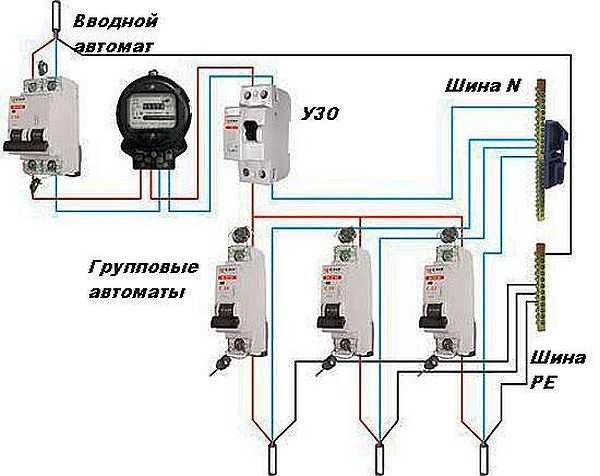
Typical wiring diagram of a private house: there can be many different groups
If the calculated load is less than 15 kW, the circuit is standard - RCD + automatic machine, counter and further division into groups. With a higher power consumption, it will be necessary to install a transformer, its parameters and parameters of all equipment will be indicated in the project.
Recently, when connecting a private house to the power grid, they require to install a meter and an automatic machine on the street. This requirement is not legally confirmed, it is just that it is easier for an electrical service to control consumption. If you want, you can fight, if not, choose a counter and a machine in a case with increased dust and moisture resistance - protection class not lower than IP-55. For installation inside a building, the protection should be less - IP-44, respectively, the price will be lower.
Choice of cables
For electrical wiring in a private house, it is better to use cables, rather than wires. Their insulation is at least two times better, and therefore the requirements for laying are not so strict, and it is safer to use them. All internal wiring in a private house must be done with protective earth... Previously, there were no such requirements, but now many electrical appliances have three-pin plugs and require grounding for safe operation. Therefore, the cable must be three-core.
In electrical cables, the conductors are made of copper or aluminum. Although aluminum is cheaper, it is used less often: it is tough, it breaks more often, and it is more difficult to work with it. With self-wiring in a private house and lack of experience, this can become a problem. In addition, in wooden houses inside, it cannot be used at all.
Determination of the cross section of the conductors
After deciding on the material, you can choose the diameter of the cable cores. This is done depending on the planned load on the line according to the table.
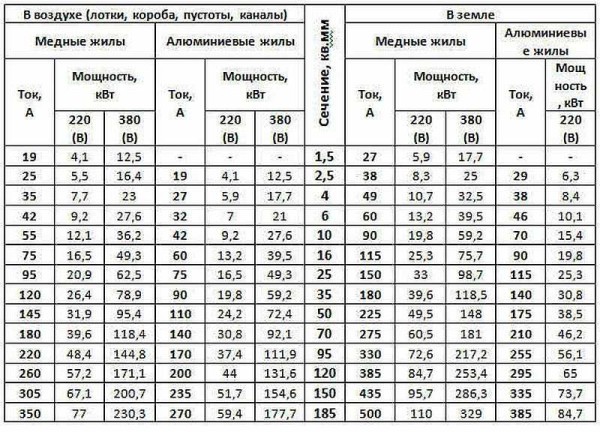
Calculation of electrical wiring - the choice of the cable section is carried out according to this table
The cross-section of the core is selected according to the current or according to the power of all consumers connected to one machine. This is where the home electrification plan comes in handy again, where you have drawn groups of consumers. Consider the sum of the currents or powers of all devices and choose the desired cross-section of the conductors from the table.
How to use the table? If you decide to lay copper wires, the input voltage is 220 V, then the left part of it, the corresponding column, is suitable for internal wiring. The found power of all consumers connected to the group will be compared (it is easier to find and calculate it). In the part where we are talking about copper wires laid in trays, voids, channels, the column "220 V" find the nearest higher value.Along this line, move to the right until the column “Section, sq. mm ". The number indicated here will be the required size of the cores. From conductors of this diameter, it will be necessary to make electrical wiring from the machine to sockets or switches.
In order not to get confused when calculating and laying, mark the cores of the same diameter on the plan with a certain color (write down so as not to forget what color you designated what). After the diameter has been determined for all consumer groups, the length of the required cables for each size is considered, a margin of 20-25% is added to the found figures. You have calculated the wiring for your home.
Choosing a shell type
There are certain requirements for the type of shell only when laying electrics in wooden houses: it is recommended to use triple (NYM) or double (VVG) cable insulation. In houses with less flammable materials, any insulation can be used. The main thing is that it is intact, without cracks, sagging and other damage. If you want to play it safe, you can use conductors with enhanced protection. This makes sense in rooms with high humidity (kitchen, bathroom, swimming pool, sauna, etc.).
More about read how to assemble an electrical panel with your own hands here.
Choice of sockets and switches
For some powerful devices, the sockets are selected according to the maximum (starting) current. For other low-power consumers, they are standard. You need to know that they are:
- Outdoor - when the body sticks out of the wall. It is easier to install them: a substrate is attached to the wall, and a socket on top of it. But few people use such models now, even in dachas. The reason is aesthetic: not the most attractive sight.
- Internal. A recess is made in the wall for the electrical part, a junction box is installed and walled up into it. The electrical part of the socket or switch is inserted inside this box.
It is the internal electrical outlets and switches that are most commonly used today. They are decorated in different styles, painted in different colors. They are selected mainly in the tone of the finish, and if this is impossible, they are put in white.
How to connect pass-through switches (turn on / off the light from two or more places) read here.
DIY wiring
Modern construction trends provide for hidden wiring. It can be laid in grooves specially made in the walls - grooves. After laying and securing the cables, they are covered with putty, comparing with the surface of the rest of the wall. If the erected walls are then lined with sheet materials - plasterboard, gypsum plasterboard, etc., then strobes are not needed. The cables are laid in the gap between the wall and the trim, but in this case only in corrugated sleeves. The sheath with the laid cables is fastened with clamps to the structural elements.
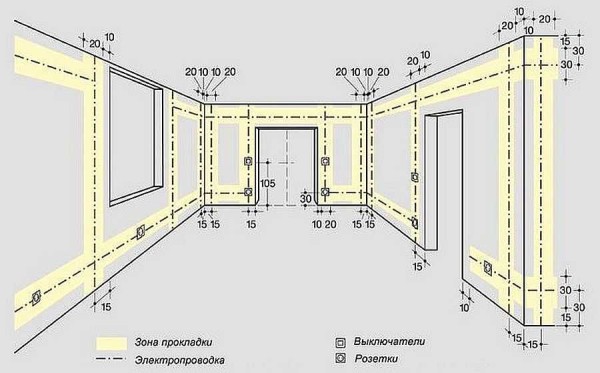
How the internal wiring should be laid. In a private house, when making a device with your own hands, you must follow all the rules
When laying, remember that the internal wiring of a private house is done according to all the rules and recommendations. This is the only way to guarantee safety. The basic rules are:
- wiring only vertically and horizontally, no rounded corners or beveled routes;
- all connections must be made injunction boxes;
- horizontal transitions should be at a height of at least 2.5 meters, from which a cable goes down to an outlet or to a switch.
A detailed route plan, similar to the one in the photo above, must be saved. It will come in handy when repairing or upgrading wiring. You will need to check with him if somewhere near you need to groove or make a hole, hammer in a nail. The main task is not to get caught in the cable.
Ways to connect wires
A large percentage of wiring problems stem from poor wire connections. They can be done in several ways:
- Twisting.Only homogeneous metals, or those that do not enter into a chemical reaction, can combine in this way. It is strictly forbidden to twist copper and aluminum. In other cases, the length of the bare conductors must be at least 40 mm. Two wires are connected to each other, as tightly as possible, the turns are stacked one next to the other. From above, the connection is wrapped with electrical tape and / or packed with heat shrink tubing. If you want the contact to be 100%, and the losses are minimal, do not be too lazy to solder the twist. In general, according to modern standards, this type of wire connection is considered unreliable.

The rules for installing electrical wiring in a private house prohibit twisting in walls (bricking them up). If they can be, then only in junction boxes, where their condition can be checked
- Connection via screw terminal box. In the housing made of heat-resistant plastic, metal terminals are sealed, which are tightened with screws. The conductor stripped of insulation is inserted into the socket, secured with a screw, using a screwdriver. This type of connection is the most reliable.

Connecting electrical wiring using terminal boxes is fast, convenient, reliable, safe
- Connecting blocks with springs. In these devices, the contact is provided by a spring. A bare conductor is inserted into the socket, which is clamped by a spring.
Still, the most reliable connection methods are welding and brazing. If you can make the connection like this, you can assume that you will not have any problems. Anyway, with connections.
Do-it-yourself wiring installation in a house requires careful fulfillment of all requirements. This is a guarantee of your privacy and the security of your private property.
After the wires from the machine to the connection point of the outlet or switch are laid, they are checked for integrity with a tester - they ring the wires together, checking the integrity of the conductors, and each separately to the ground - checking that the insulation is not damaged anywhere. If the cable is not damaged, proceed to the installation of the outlet or switch. Having connected, everything is checked again with a tester. Then they can be put on the appropriate machine. Moreover, it is advisable to sign the machine immediately: it will be easier to navigate.
Having finished the electrical wiring throughout the house, having checked everything on their own, they call the electric laboratory specialists. They check the condition of the conductors and insulation, measure grounding and zero, according to the results they give you a test report (protocol). Without it, you will not be given permission to commission.

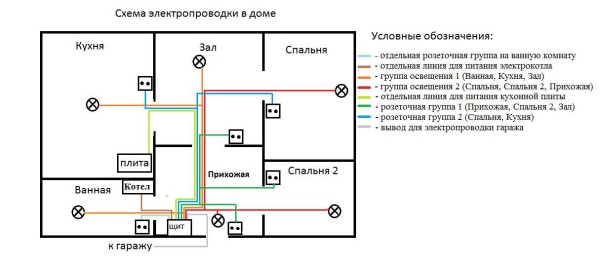
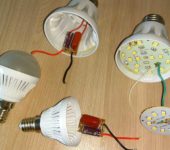

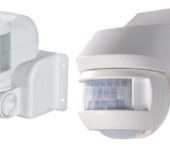
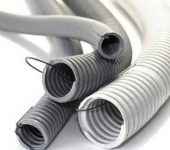
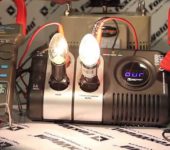





Good article, everything is clear.
"Connecting electrical wiring using terminal boxes is ... .., reliable, safe" -))) but speaks back to reality -> THERE IS NOTHING RELIABLE TWISTING with pliers! Unless, of course, you do not twist copper with aluminum.
How many of these newfangled terminal blocks burned out from fashionable electricians))), then redo it ....
... TWIST has a larger contact area than fast terminal blocks, with all the consequences ...
In old houses with aluminum wiring, it is mainly NOT twisted connections that burn out, namely terminal and screw ones, the same picture emerges in new houses with copper.
Hello! Tell me, please, In which programs do you draw all the schemes? Thank you!
We have a whole article. Choose what is more convenient for you Diagram drawing programs